The
paths, ponds, and pastures of pastoral mobility
gujarat photovoice
Facilitated by Natasha Maru
Jyaan
maal
ne maja
tyaan
amane
maja
(Where
the animals are happy we
are happy) say the Rabari maldhari about the places they visit. While they
move to access choicest fodder resources and emerging market opportunities.
During the winter and summer months they travel eastwards towards mainland Gujarat to feed on crop residues, before traveling back westwards to Kachchh, their home district, to graze in the commons.
During the winter and summer months they travel eastwards towards mainland Gujarat to feed on crop residues, before traveling back westwards to Kachchh, their home district, to graze in the commons.
The maldhari
and
their animals have an intimate relationship with the land and environment that
is mediated through movement. As they move through places, they experience it
intimately – the textures, sights, sounds, smells – and form relationships with
them. Their movement involves an entanglement of complex feelings, such as
trust, fear, friendship, diplomacy, as they encounter others, both familiar and
unfamiliar.
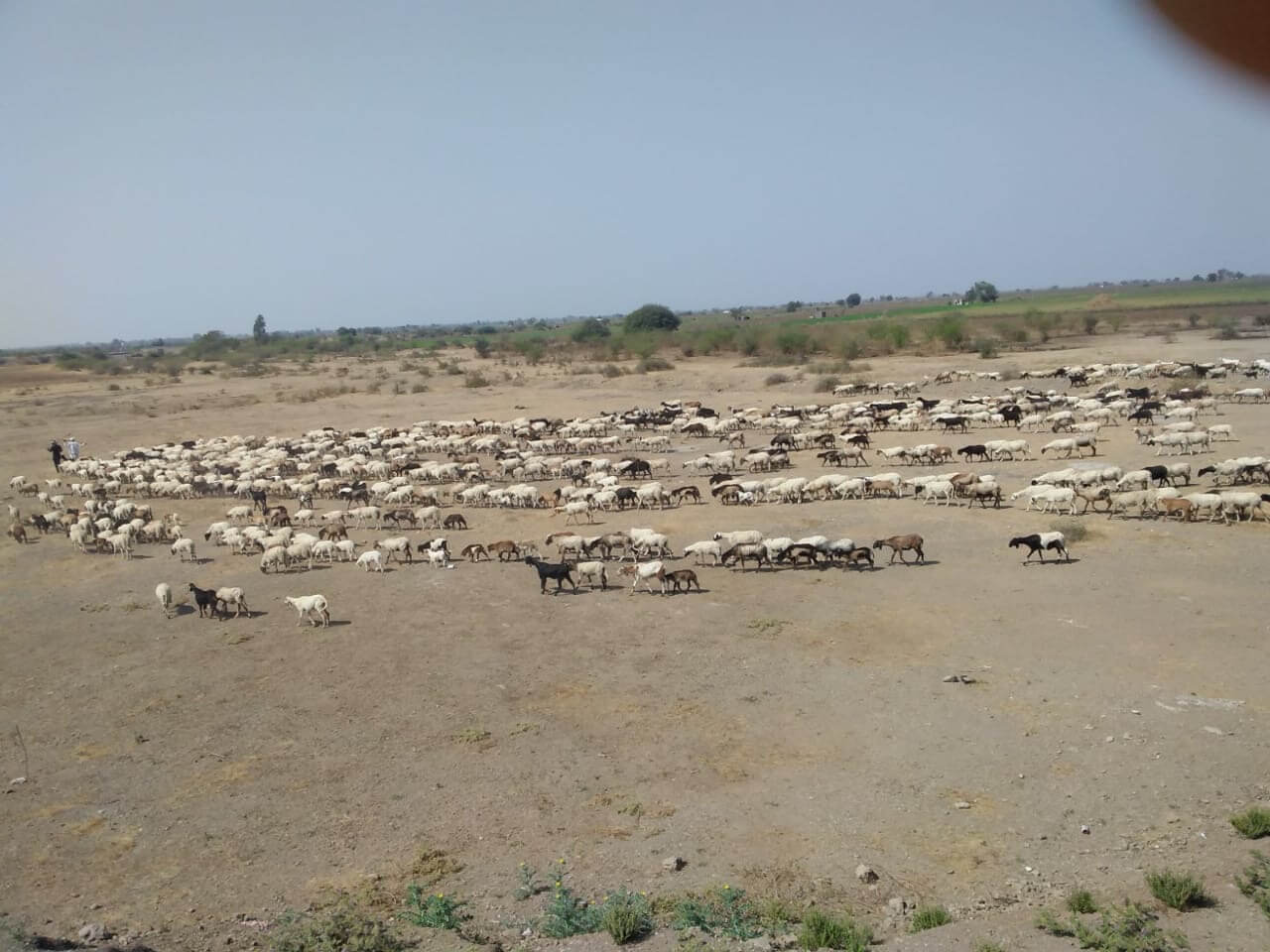
ame halya jaiye.
We keep going.“We keep walking till we find grazing – if there is a drought in Kachchh, we see the situation in Jamnagar, in Ahemdabad. We go all the way to Ahemdabad (from Kachchh) in the summer, and to Mata na Madh (western Kachchh) in the monsoon. We have even traveled to Maharashtra when there was a big drought in Gujarat in 1986-87.”

“We decide 2-3 days in advance of moving. We think of where there is good grazing, where it is worth staying. We may stay in one place one night or even 15-20 days. We contact pastoralists ahead and farmers ahead - they tell us, come to our farms in a week or come in 10 days. Our mukhi or leader goes to find grazing. This scouting is called niharu karvu. If we take a stroll through the outskirts of a village, then we know that there are crops that will be harvested in this many days and will be available for the livestock to graze. It is not decided where we go, but we have built relationships in certain villages over the years where we are comfortable, so we try to go there year after year, providing grazing is available.”
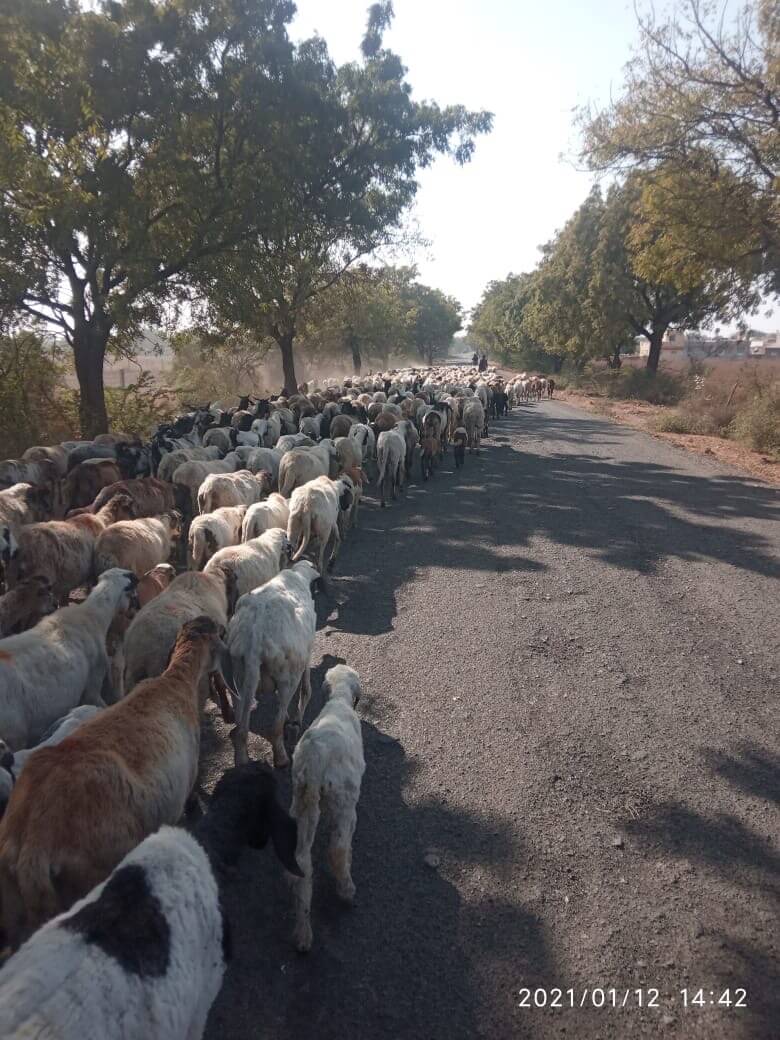
“When it is time to go, even our animals get restless. During this time, the livestock do not stay in padtar jameen or unsown land. We have to take the animals to their grazing when it is time for it. When it is monsoon we have to take them to padtar jameen when it is winter, there is harvest so we bring them there. And after some days, the livestock will go to the cotton fields, then wheat and so on. Right now there is nothing in the padtar, it is all dry.
In the farms, the animals get green fodder so it is good for them. If the animals go to the padtar area now then maal ghati jaay, loi na pakde (the animals will lose weight, they will not hold blood). Kheti ma hoy to lohi pakde, charingo saaro jade (in farms they get good blood, they get good grazing). If the grazing is good then the animals grow well.”
In the farms, the animals get green fodder so it is good for them. If the animals go to the padtar area now then maal ghati jaay, loi na pakde (the animals will lose weight, they will not hold blood). Kheti ma hoy to lohi pakde, charingo saaro jade (in farms they get good blood, they get good grazing). If the grazing is good then the animals grow well.”

“Yet now, because the irrigation facilities have developed, we do not have the same flexibility as before. Jameen badhi rokay gai (the land is blocked). So some villagers allow us to graze and pen in their fields and fallows (porva de), while some hustle us away (tagdave). There’s always these moments of tension during our journey where we must speed up.”
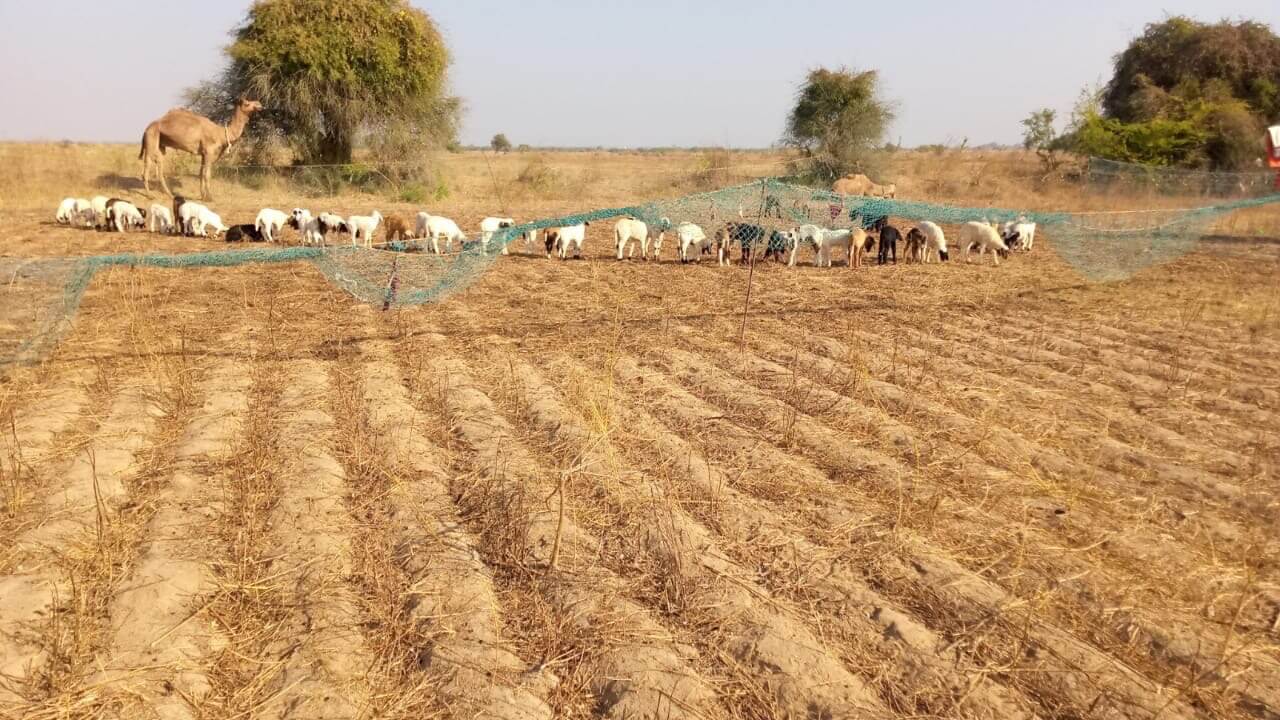
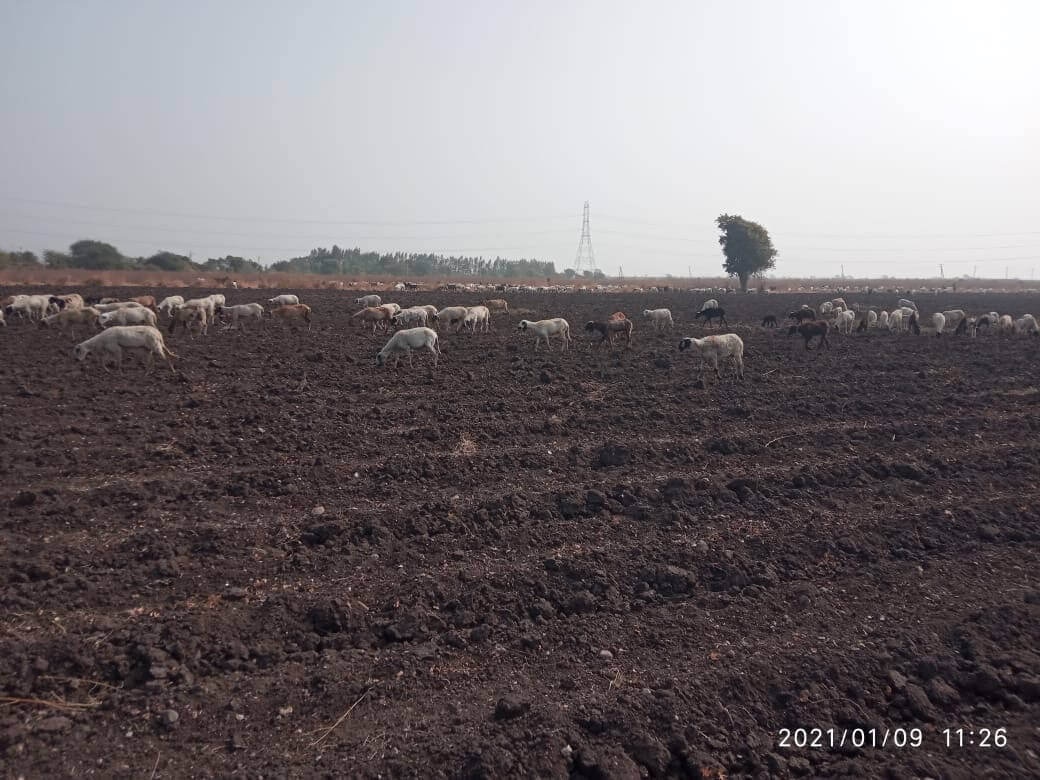
“On our journey we encounter many different surfaces and soils - from the sandy rocky surface in Kachchh to the clayey loamy soils in Gujarat. While the black soil in Kachchh is desirable in the summer, as it does not stick to clothes, it becomes undesirable in the monsoon as it retains water and becomes mucky. Hence, while the pastoralists arrive in Gujarat at a leisurely pace, they must return quickly as the monsoon approaches, both as grazing declines and as farms get sown, and because the sheep find it difficult to walk in the black, mucky soil.”

“Not all land is of the same quality, even if it may seem just like other lands and have the same produce. We know from the animals. They tell us. If the land is good then when you look at the animals in the morning, in the evening, then they look good. If the land is not good then the animals become weak in the morning. So we get to know. If the land is kadak (strong), then the maal walks fast, then it doesn’t distribute, it walks together. And if it is mori (weak), then the animals don't walk, they get dispersed, and we get tired bringing them together. And if it is good land, then you just make the call - you don’t need to go and check them as the animals walk together. We get experience of the land through the animals. How will we know? For us, land is land. The animals tell us.”
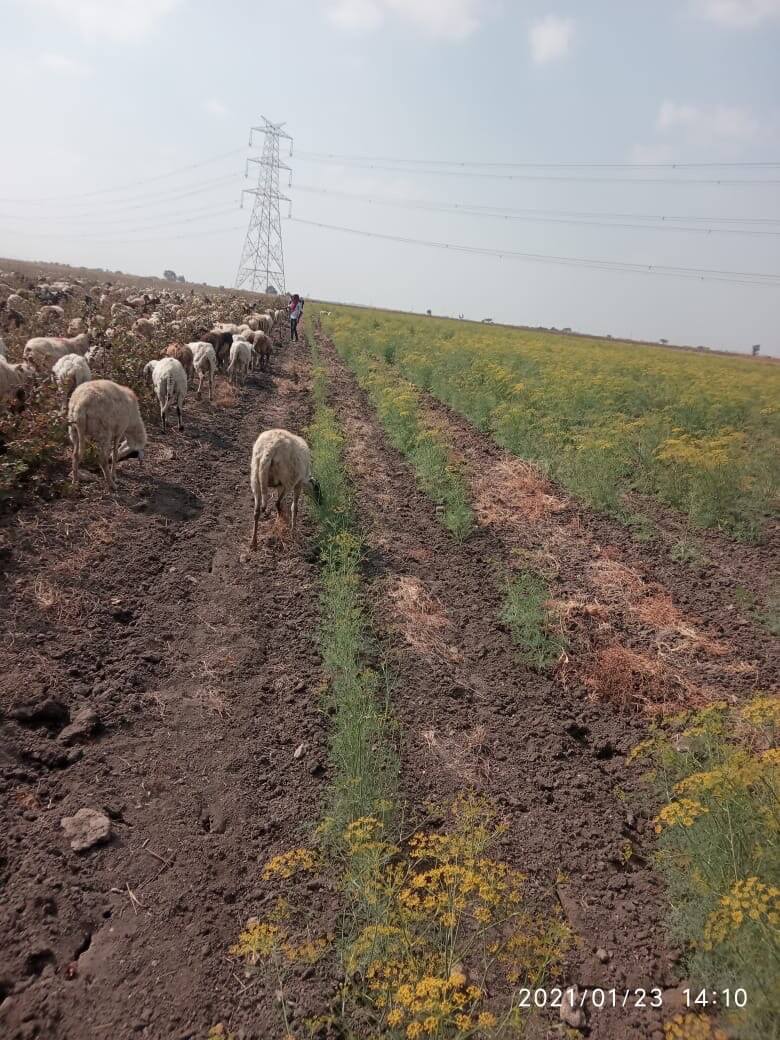
“In farm lands, we provide manure in exchange for grazing access. In certain areas, and especially where crop residues are not available, we also receive cash and grain in exchange for manure. In some cases, like in cotton fields, we also support cotton weaning by providing labour. Therefore migration offers the chance to graze on the choicest fodder resources and so provide good nutrition to the animals, as well as make the most of other economic opportunities.”
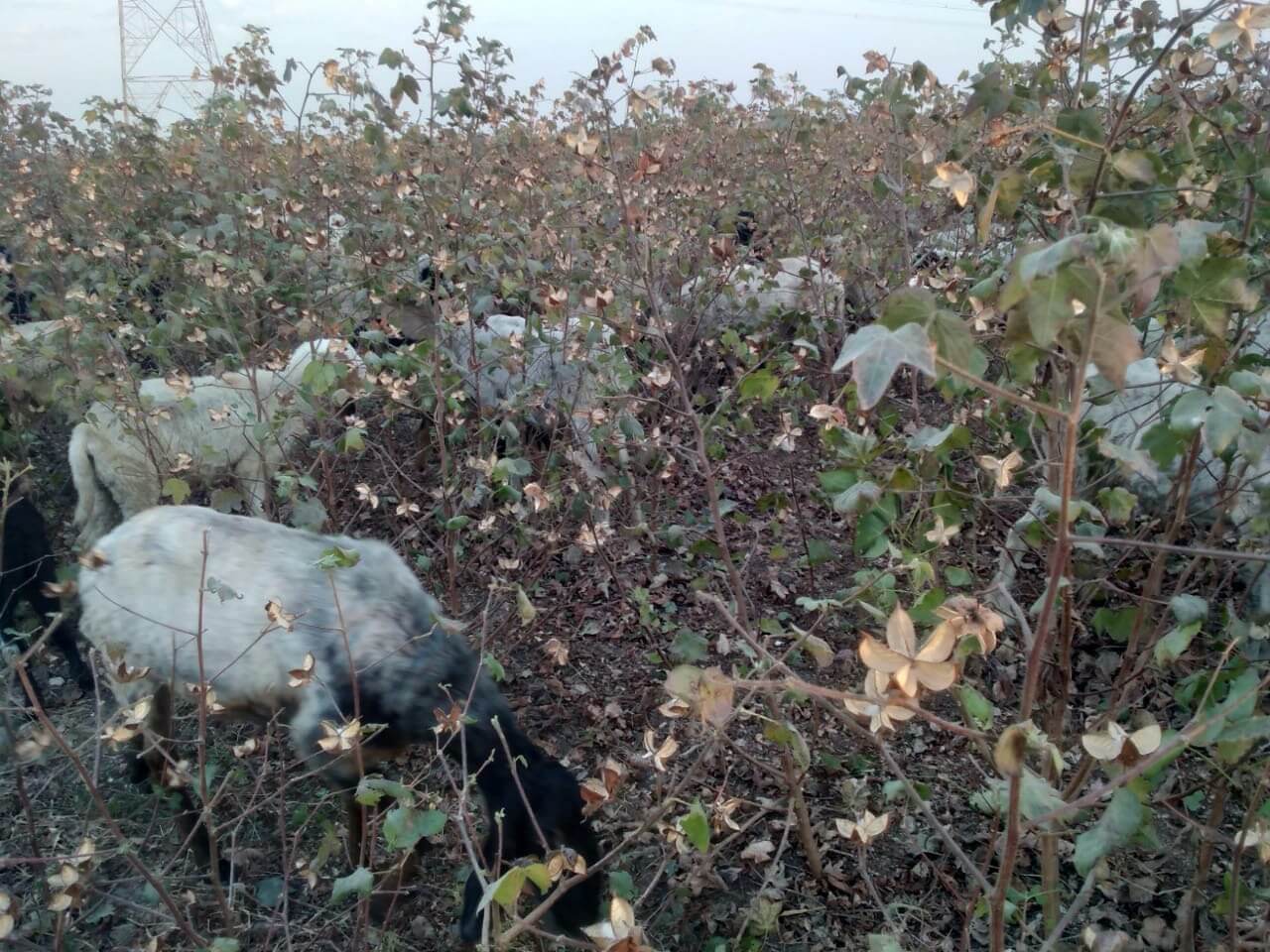
“Animals receive fodder that provides the best nutrition to them for that time. This affects their overall health and reproduction. If the animals are well fed on cotton crop residues, for example, they breed on time and have healthy offspring. This affects the migration cycle as it is well aligned with life cycles. For example, young lambs cannot walk long distances, so if we prepare for them to be born in the monsoon, when they can feed on fresh grass, they would be ready to travel by the winter.”

“Paani toh game tyaan madi jaay. Gaamna evadama, talao ma, bore ma - koi bhalo manas chalu kari pai de, dharm thay, aa toh abol prani chhe.”
(We can find water anywhere. In communal troughs, ponds, borewells – some good person will switch on the motor to water the animals, it is a good deed for these are unspeaking creatures).The sheep are taken for a drink everyday, especially in hot weather.

“The time that the sheep are drinking is also the time when we are able to take a break, rest and drink some tea. When our fathers were young, we would go all the way to the forested regions in Baroda and to Kano mulk near Bharuch as water was available there and the rainfed crops near Morbi and Ahmedabad were long-cycle varieties and still standing at the time.”